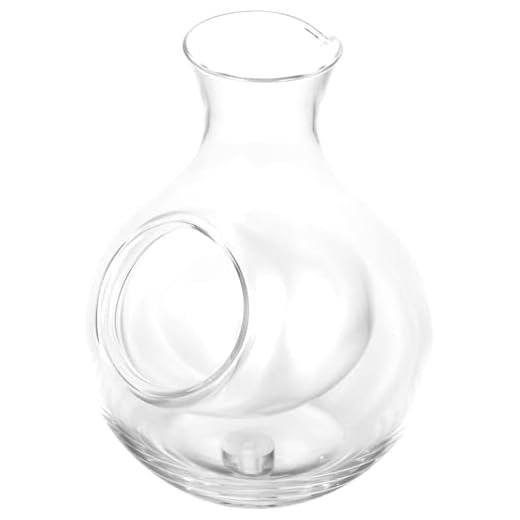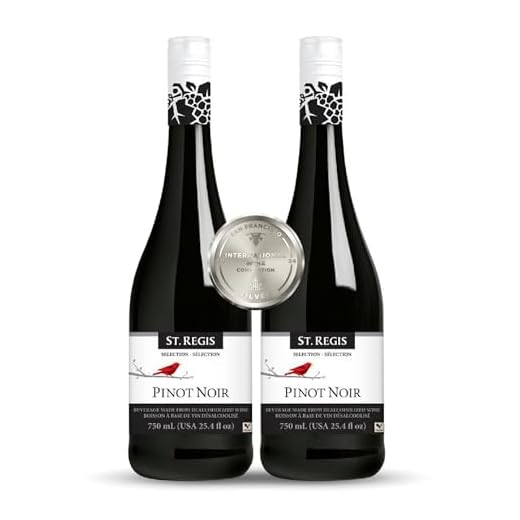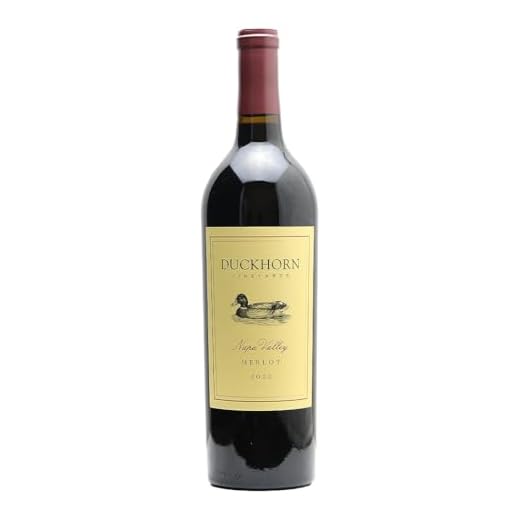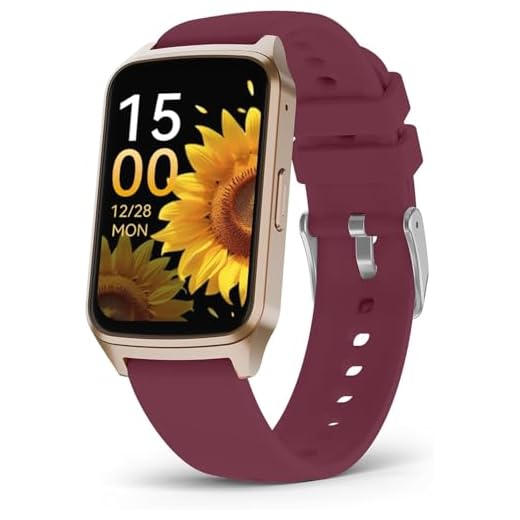



Approximately 125 to 150 units of energy can be found in a typical serving of this delightful beverage. The precise figure varies based on factors such as the specific type and alcohol content. For instance, a full-bodied variety may contain slightly higher energy levels compared to a lighter option.
When incorporating this indulgence into your diet, consider moderation. Enjoying a moderate amount can complement meals and enhance dining experiences. It’s beneficial to be mindful of the accompanying snacks or meals, as they can influence overall intake.
When selecting a bottle, pay attention to the label. Some varieties boast lower energy figures due to reduced sugar content. Exploring these options can lead to a more satisfying experience without compromising enjoyment.
Caloric Content of a Serving of Merlot
A serving of Merlot typically contains around 120 to 125 units of energy. This amount can vary based on factors such as the specific vineyard, production methods, and residual sugars present in the beverage.
Comparison with Other Varietals
In general, the energy content of Cabernet Sauvignon and Pinot Noir is quite similar, ranging from 120 to 125 units as well. However, sweeter varieties like Zinfandel may have slightly higher energy counts due to increased sugar levels, sometimes reaching up to 130 units per serving.
Choosing Wisely
When selecting a variety, consider both the flavor profile and the energy content. Opting for dry selections often results in lower sugar, thereby decreasing the overall energy count. If you’re mindful of your intake but still wish to enjoy a glass, stick with drier options which provide a more balanced experience without excessive sugars.
Understanding Serving Sizes of Red Wine
The typical serving size for a glass of this beverage is 5 ounces (approximately 150 milliliters). This amount is standard in restaurants and social settings, providing a balanced experience for enjoyment without overindulgence.
Importance of Measuring
Measuring your pour is crucial for controlling intake. A standard 5-ounce serving usually contains around 120 to 130 units of energy, depending on the type and sweetness of the drink. Using a measuring cup or wine pourer can help ensure accuracy and consistency.
Variations in Serving Sizes
Keep in mind that serving sizes can vary significantly. Some establishments may offer larger portions, such as 6 or 8 ounces. Always be aware of the size being served, as this directly impacts the total energy consumption. If you prefer a smaller pour, consider asking for a half glass or tasting portion, which typically measures about 3 ounces.
Being mindful of serving sizes not only helps with moderation but also enhances the overall tasting experience. Enjoying the nuances of flavors becomes easier when the amount is appropriately measured.
Caloric Content of Different Types of Red Wine
Choosing a varietal can significantly influence the energy value you consume. Below is a breakdown of various types of dark beverages, highlighting their approximate energy content per serving.
Cabernet Sauvignon
This robust selection typically contains around 120-130 units of energy. Its full-bodied nature often leads to a richer profile, enhancing the overall experience.
Merlot
With a smoother finish and softer tannins, Merlot generally offers about 115-125 units of energy. It’s a versatile choice, pairing well with various cuisines.
Pinot Noir
This lighter option boasts about 110-120 units of energy. Its delicate flavors make it a favorite for those who prefer a more refined taste.
Zinfandel
Known for its fruit-forward profile, Zinfandel usually presents around 120-130 units of energy. It’s often enjoyed with hearty dishes, thanks to its bold character.
Sangiovese
This Italian variety typically contains about 120-125 units of energy. Its acidity and fruitiness make it a great match for tomato-based sauces.
Malbec
This deep, dark selection generally has around 120-130 units of energy. Its rich flavors can stand up to grilled meats, making it a popular choice for barbecues.
Syrah/Shiraz
With a spicy and bold profile, this wine usually ranges from 120-130 units of energy. Ideal for those who enjoy a more intense flavor experience.
- Consider the sweetness level; sweeter varieties often have higher energy values.
- Serving size can vary; a standard pour is typically 5 ounces.
- Check the label for specific energy information, as it can vary by brand and production method.
When selecting your dark beverage, be mindful of these variations to make informed choices that align with your dietary preferences and lifestyle. Enjoy the exploration of flavors while keeping an eye on your intake.
Factors Affecting Caloric Value in Red Wine
The caloric content of a serving of fermented grape beverage is influenced by several key elements:
- Alcohol Content: Higher levels of alcohol directly correlate with increased energy yield. Generally, stronger varieties can contain significantly more energy than lighter options.
- Residual Sugar: Sweetness in a fermented beverage often results from unfermented sugars. Wines with elevated residual sugar levels will have a higher energy contribution.
- Varietal Characteristics: Different grape varieties possess unique profiles that can affect the final energy count. For instance, fuller-bodied options often carry more energy than their lighter counterparts.
- Winemaking Techniques: Processes such as oak aging can influence flavor compounds and, in turn, the caloric content. Some techniques may enhance the richness, leading to a higher energy level.
- Serving Temperature: While not directly affecting the energy value, the temperature can alter the perception of sweetness and body, which might influence how one enjoys the beverage.
Understanding Balance
When selecting a fermented grape beverage, consider the balance of these factors. A rich, full-bodied selection may offer a more satisfying experience, despite a higher energy count.
Practical Tips
- Choose lighter varieties if watching energy intake.
- Explore options with lower residual sugar for a more restrained choice.
- Consider alcohol levels as a primary factor in energy assessment.
By evaluating these elements, you can make informed selections that align with your preferences and lifestyle. Enjoy responsibly!
Comparing Red Wine Calories to Other Alcoholic Beverages
In terms of energy content, a serving of red grape beverage typically aligns closely with other popular alcoholic options. For instance, a standard 12-ounce beer usually contains around 150-200 units of energy, while a 1.5-ounce shot of distilled spirit can range from 90 to 120 units. This comparison highlights that my favorite varietal tends to offer a moderate choice for those monitoring intake.
Craft beers, often heavier and more robust, can pack more energy compared to lighter ales or lagers. Meanwhile, cocktails can vary significantly based on mixers; sugary additives may elevate their energy content considerably, sometimes exceeding that of wine. A mixed drink with juices or sodas can easily surpass 200 units, making it a less favorable option for the calorie-conscious.
When evaluating options, consider the balance of enjoyment and nutritional impact. If you’re seeking a flavorful yet lower-energy experience, opting for a glass of fine red grape beverage might be ideal. For culinary pairings, the versatility of wine can complement many dishes without excessive energy load.
For those planning meals or special occasions, understanding the time needed for preparation can also be essential. You might find this how long does it take to cook a turducken resource helpful in your planning.
Calculating Calories Based on Alcohol Percentage
To accurately determine the energy content in a serving of fermented grape beverage, start with the alcohol by volume (ABV) percentage. A typical glass contains approximately 5 ounces (about 148 mL). The formula involves understanding that each gram of ethanol contributes roughly 7 kilocalories. Multiply the volume of beverage by its ABV and the density of ethanol to find the total energy from alcohol.
| ABV (%) | Calories from Alcohol |
|---|---|
| 12 | about 120 |
| 14 | about 140 |
| 15 | about 150 |
Beyond the ethanol, residual sugars and other components also contribute to the total energy count. Consider varietals with higher residual sugars, as they may elevate overall energy levels. Always account for these elements when calculating the complete energy profile of your drink.
For practical application, if the ABV is known, use the following calculation: multiply the ABV by the volume in mL, then multiply by 0.789 (the density of ethanol) and by 7. This gives a precise energy estimate from the alcohol itself. Adjust for any additional components based on the specific type of beverage.
Tips for Enjoying Red Wine While Managing Caloric Intake
Opt for smaller servings. Instead of a full pour, consider using a smaller glass to help control the amount you consume. This simple change can significantly reduce your intake without sacrificing enjoyment.
Choose wines with lower alcohol content. Varietals that fall in the 12-13% range typically have fewer sugars and, consequently, less energy density. Wines like Pinot Noir or some Merlots often fit this profile well.
Pair with food wisely. Enjoying a meal alongside your beverage can slow down consumption and enhance flavors. Focus on lighter dishes, such as grilled vegetables or lean proteins, to keep the overall meal balanced.
Avoid sugary mixers or heavy appetizers. Stick to cheese or olives instead of rich dips or desserts. This keeps your experience focused on the qualities of the drink itself while managing energy levels.
Take your time. Savor each sip and engage with the flavors. Slowing down not only enhances the tasting experience but also allows for better self-regulation regarding how much you consume.
Stay hydrated. Alternating between sips of your favorite varietal and water helps maintain balance and can curb the urge to overindulge. Hydration is key to enjoying any beverage responsibly.
Explore varietals with lower residual sugars. Some options like dry Cabernet Sauvignon or Sangiovese may offer greater satisfaction with a reduced impact on your daily intake.
Be mindful of your environment. Create a relaxing setting that encourages moderation. A quiet evening at home can lead to more thoughtful consumption than a lively gathering.










